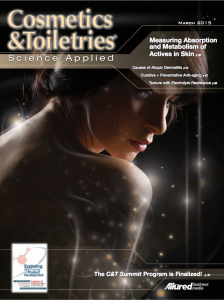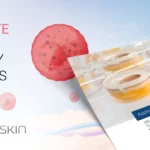NativeSkin®, a novel skin explant model for skin delivery assessment

The Genoskin team is proud to announce that Oriflame Cosmetics published an article in the March 2015 edition of Cosmetics & Toiletries under the title “A Novel Skin Explant Model For Skin Delivery Assessment”.
The work presented in this article was conducted by Oriflame’s cosmetics experts in their facility in Stockholm. Genoskin has provided them with ready-to-use NativeSkin® human skin models for the purpose of this study.
Measuring Absorption and Metabolism of Actives in Human Skin
The article clearly demonstrates the major advantages of using the NativeSkin® human skin explant model, with its inherent cellular viability, tissue integrity and normal skin barrier function. Importantly, this article emphasizes the interest of having skin biopsies embedded in a solid matrix, which allows for a robust and easy-to-handle testing kit.
Excerpt of the Article in Cosmetics & Toiletries
“The efficacy and safety of cosmetic products depends on the chemical structure and toxicological profile of their ingredients, as well as the levels of these ingredients that the user will encounter. These parameters are not only linked to the ingredients in a formulation, but also to what they become on the skin. Studies have reported that skin absorption of the same ingredient in different topical formulations can differ as much as 10 to 50 times. Moreover, determining absorption itself is challenging due to the complexity of structures and mechanisms constituting the skin delivery pathway. Delivery depends on various parameters, including the physicochemical properties of the active ingredient, skin condition, formulation type, etc.
For reasons of safety and efficacy, there is a clear need to evaluate the skin permeation of cosmetic actives, and in vitro methods are preferred from both reproducibility and regulatory standpoints. Therefore, to obtain near in vivo conditions, a rigorous protocol and an appropriate skin model are key. The skin model should have good barrier function and metabolic activity. It also must be practical and easy to use, and provide reproducible results. This paper describes the evolution of an experimental explant model to meet these needs and provide the desired test conditions.
In vitro Skin Delivery Tests
The pharmaceutical industry inspired cosmetic industry test guidelines for in vitro assessments of the dermal absorption and percutaneous penetration of ingredients. In 2004, the Organization for Economic Co-operation and Development (OECD) adopted Test Guideline 428 and a corresponding Guidance Document, which have been incorporated into in vitro dermal absorption studies in toxicological dossiers of cosmetic ingredients. The OECD documents present the use of static or dynamic diffusion cells and describe the main steps to conduct studies, i.e., the dose to apply, application time, etc., to harmonize test protocols. They also give an overview of pertinent skin models—an important parameter for experimentation.”
The full article is available in the March 2015 edition of Cosmetics & Toiletries.
Comments are closed.




